Dual wavelength hail detection: 26 September 2012
Author: P. C. Kennedy
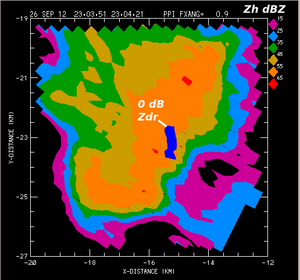
Reflectivity data in a CSU-CHILL radar S-Band 0.9 deg elevation angle PPI scan through a thunderstorm. Tumbling / quasi-spherical hailstones reduce the differential reflectivity to 0 dB in the shaded area. Plots comparing hail detection methods based on Zdr and on reflectivity differences at S and X-Bands have been prepared.
Introduction
During test operations of the CSU-CHILL radar's dual wavelength (11 and 3 cm / S- and X-Band) configuration, a thunderstorm that was producing sub-severe (less than 1 inch diameter) hail was observed on 26 September 2012. Differences between the reflectivities measured at these two wavelengths can be used to infer the presence hailstones. When hailstone diameters reach ~ 1 cm, Mie scattering effects begin to reduce the backscattering cross section at the 3 cm wavelength, decreasing the reflectivity. Scattering at the longer 11 cm wavelength remains in the Rayleigh regime, so the backscattering cross section (and reflectivity) continues to increase with hailstone diameter.
Reflectivity data
The data observed at the two wavelengths were interpolated to a common 500 m horizontal mesh 3D Cartesian using the NCAR REORDER program. The grid X,Y origin is at the radar. The following two plots show the reflectivity data at the 2 km MSL (~500m AGL) height level. An attenuation correction based on differential propagation phase (phidp) measurements made at X-Band has been applied to the 3 cm data. The reflectivity values within precipitation areas are generally in good agreement except in the cell located near X=-17, Y=-22 km, where the 3 cm reflectivities are notably less than those observed at 11 cm.
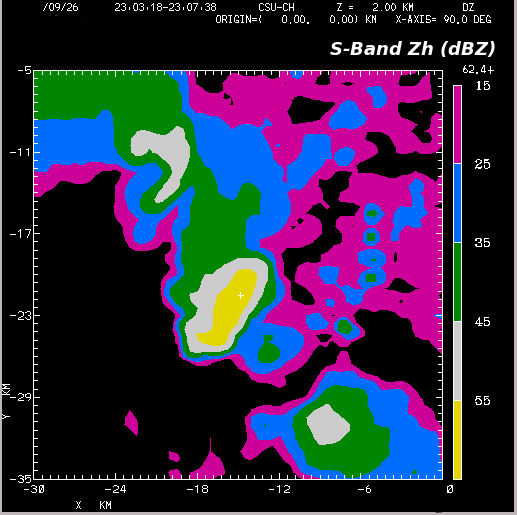
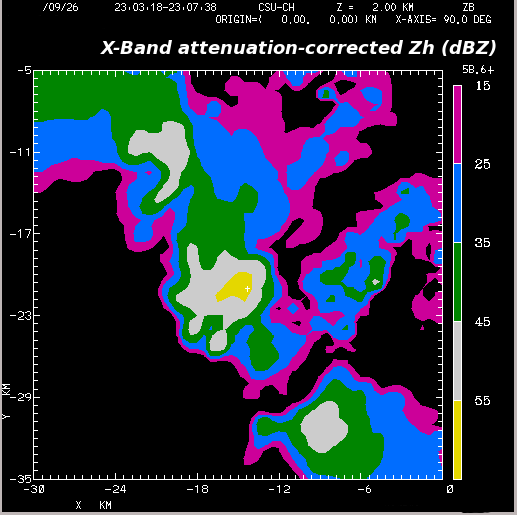
Dual wavelength hail signal
Following Herzegh and Jameson (BAMS 1992, p1365-1374), the dual wavelength hail signal is calculated by subtracting the attenuation-corrected 3 cm reflectivity from the 11 cm reflectivity; regions where this difference exceeds 6 dB are associated with hail. The solid contour line in the following plot shows that the dual wavelength hail signal level exceeds the 6 dB threshold in the central echo core.
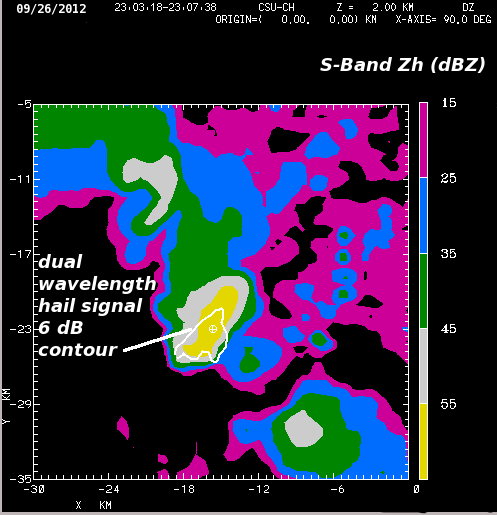
11 cm wavelength polarimetric data
Differential reflectivity (Zdr) data can also be used to infer the presence of hail within convective echoes. The tumbling motions of the hailstones tend to equalize the horizontally and vertically polarized received signal levels, producing near 0 dB Zdr values. The 11 cm wavelength Zdr data is shown as a color-fill in the following plot; solid contour lines depict the 45 and 55 dBZ reflectivity levels. A Zdr reduction due to hail is evident within the central echo core. (A reference mark has been added at the minimum Zdr location.)
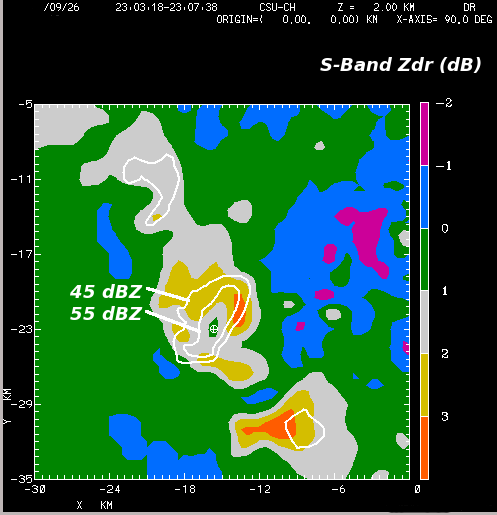
Aydin et al (JAM, 1984, p1475-1484) developed Hail Differential Reflectivity (Hdr) as a parameter indicating the presence of hail at above-freezing temperatures. The Hdr formulation identifies regions where the differential reflectivity is lower than the level normally expected from a population of oblate raindrops at a given reflectivity level. These Zdr reductions from the "expected" pure rain values cause Hdr to become positive. (Hdr is negative in rain.) In the next plot, the 0 dB Hdr contour encloses the region where positive Hdr levels indicate the presence of hail. Despite being based on different physical principles, the Hdr-defined hail region is well correlated with hail detection results obtained using the dual wavelength method.
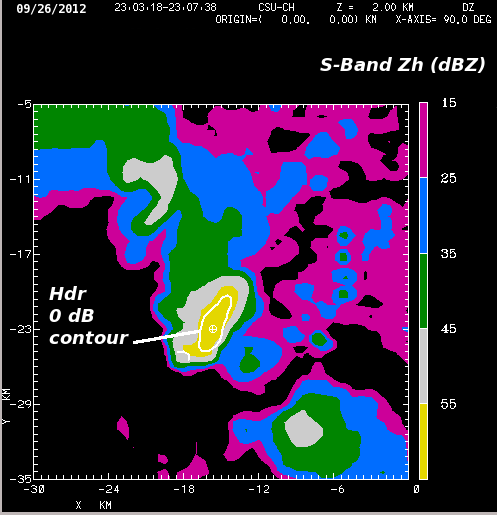
Summary
The differential onset of Mie scattering at the 3 and 11 cm wavelengths can be used to map the location of larger diameter frozen hydrometeors. When wavelength-dependent reflectivity differences are being considered, the attenuation corrections applied to the 3 cm data are of critical importance.